
Though the mango tree is more appreciated for the shade of its lush foliage than for its fruits in Paraguay, the green balls that hang from innumerable branches over Asunción, the capital, have stubbornly begun their yearly swelling. Alongside them, the blossoms of the tajy and jacaranda trees add explosions of color, painting streets pink, white, yellow, and lilac. The hues and aromas maintain a slim veil of provincial life over a city in the midst of rapid growth, and searching for infrastructure, justice, and balance.

The first moments of spring also bring sporadic fluctuations in temperatures. Following days of relative winter cools, the mercury jumps to 110-degree heights, foreshadowing the sweltering summer to come.
Spurred by the heat, neighborhood copetines—small eateries—spill out onto sidewalks: Plastic tables are pointed towards soccer-filled televisions and enthusiastically populated. Abundant quantities of light macro Lagers served in bloated bottles known as ñoños are plunged into ice buckets and drunk before they have the chance to become anything other than freezing cold.

However, take a closer look and, amid these ubiquitous scenes of traditional Paraguayan drinking culture, a craft brewing movement is also having its spring.
ON THE UP
I stroll through the largely residential neighborhood of Recoleta, passing the towering family tombs that fill the grand cemetery of the same name. Soon, a couple of barrels on the sidewalk, and a wall studded with international bottle caps, let me know that I’ve arrived at my destination: Singular Brewery. Francisco Montanaro, Singular’s owner and the president of the Paraguayan Association of Craft and Home Brewers (AcervaPy), greets me warmly and promptly places a glass of hazy, fruity Belgian Singel in my hand.

The logo on the glass features a cartoon of what appears to be an anteater raised on its hindlegs offering a hug. It’s a guilty thrill to see that the oso melero, found across Paraguay, really does strike this pose when it finds itself in a squeeze.
Montanaro explains that, like many other early members of Paraguay’s brewing community, his first taste of craft beer came on foreign shores: in London while working as a flight attendant.
Two or three years back, rather than support us, people really criticized the prices. Why would I pay $5 for one liter of beer if I can get two liters at the store for $2? Now people know what craft beer is.
Although the names of the scene’s pioneers appear in conversation like grand figures from a distant past, the history of craft beer in Paraguay is extremely short, especially compared with giant neighbors Brazil and Argentina. Around a decade ago, early forerunners fought to solve problems such as sourcing information, equipment, and ingredients—they simply weren’t available in Paraguay. Tales of former smuggling runs to bring in hops and malts from Argentina abound in the beer community.
“Ten years ago, we didn’t have anything and now, little by little, we’re beginning to get everything we need right here,” Montanaro says. “We craft brewers are slowly moving into the market and the market’s also slowly giving us recognition.”
In a land where a limited number of exceptionally cheap macro Lagers hold a strong grip on the idea of what beer is, it has taken patience to position more costly craft drinks. AcervaPy has taken an active role in running outreach and educational events.
“Two or three years back, rather than support us, people really criticized the prices,” Montanaro says. “‘Why would I pay $5 for one liter of beer if I can get two liters at the store for $2?’ Now people know what craft beer is.”

It seems the tastes of Singular’s customers—most of whom are from society’s wealthier sectors—have markedly changed: Montanaro’s now trying to introduce small batches of well-researched historical brews. As a refreshing, cloudy Grisette takes the edge off the humid day for me, he mentions dreams of publishing a book on the subject.
Before I go on my way, I’m invited to attend AcervaPy’s sixth annual beer competition, set to begin days later. It looks like it will be the biggest one yet.
IN SEARCH OF PARAGUAYAN BEER
I head into the early evening, shaking off the light mental haze produced by the cocktail of drink and stifling humidity. Rush hour takes place around me: Battalions of cars pass and tired, cramped bus users travel back to the more affordable surrounding towns, likely hoping for improvements in public transport that never come.
I’m soon in Las Mercedes, a prosperous neighborhood skirting the edge of downtown Asunción that is becoming a craft beer stronghold. A mounting number of bars, cafés, and restaurants offer products for demanding or adventurous hungers and thirsts.

Mayeli Villalba, photographer and friend, joins me and we enter Tap Garage, the first bar in the country to offer exclusively Paraguayan craft beer on tap. We pass groups of well-dressed friends who have clearly started their nights early—nocturnal activities typically get going late here—and then settle into a back patio complete with trees and a sky view, a common feature in Paraguay’s bars.
Owner Hugo Simón strides over, beer in hand. I’m surprised by his young age, somewhere in his mid-thirties, as I’ve heard him spoken about with real deference. As rumor has it, he’s the only Paraguayan to hold a Master’s degree in brewing science. He tells us his affair with beer started early: Back in high school he wrote his graduation project on beer consumption benefits. “They wouldn’t accept it as I was a minor,” he says.

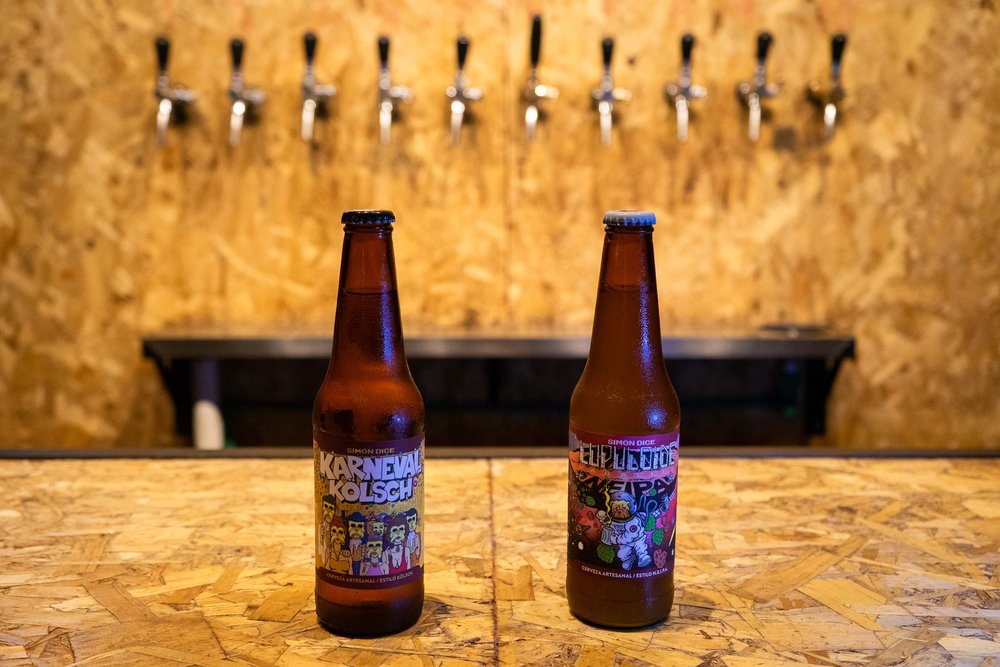
Like Montanaro, Simón emphasizes the explosion of the craft sector.
“When Tap Garage opened three years ago, we had 10 taps and we couldn’t fill them all because there just wasn’t enough beer. Now we’ve got 20 and we need more for all the beers that are on offer. The reality is that quality is very high. We have no reason to feel inferior to other countries.”
This growth includes beers from Simón’s own brewery, Simón Dice, or Simon Says. Minutes later we’re staring at a tray of samples from this growing catalogue.
When Tap Garage opened three years ago, we had 10 taps and we couldn’t fill them all because there just wasn’t enough beer. Now we’ve got 20 and we need more for all the beers that are on offer. The reality is that quality is very high. We have no reason to feel inferior to other countries.
Simón calls his Kellerbier the ace up his sleeve. Smooth, clear and extremely drinkable, it’s one of the best sellers at Tap Garage. An English Porter quickly follows. This liquid Proust’s madeleine—complete with notes of coffee and chocolate—transports me back to my native Britain: Brighton beach, muddy fields, winter jumpers. It’s a taste that is far from easy to find in Paraguay.
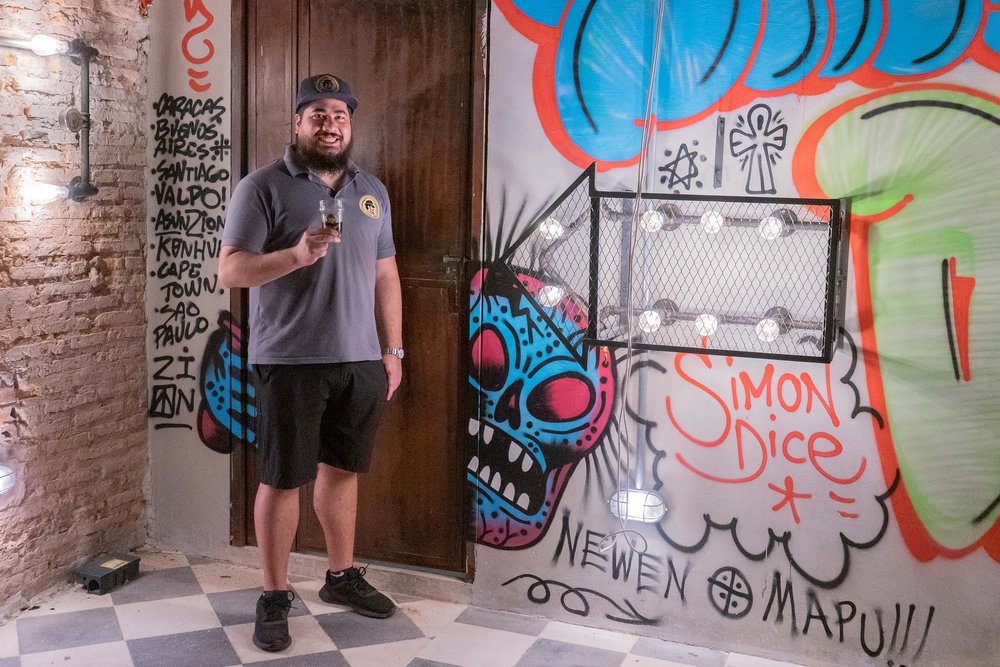
Back in the subtropical present, I hear Simón suggest we head along to visit his new brewpub, also called Simón Dice, in the city center. While the pandemic has delayed the opening of the establishment’s bar section, the brewing operation is in full swing.
Like much of Latin America, COVID-19 has been a hard blow for Paraguay. Though the country was initially praised as one of the best performers in virus control in the region, it slumped to having the world’s highest COVID death rate per capita for several months in 2021, a situation that went underreported in international media. Simón is not alone in having to put his plans on hold.
The Simón Dice brewpub occupies a grand old house in central Asunción. A careful conversion has preserved many of the original features—tall ceilings, big heavy doors—while adding a metal-clad steampunk aesthetic and carving out room for fermenters to produce 68 barrels per month. Exquisite graffiti murals of beer goddesses from different cultures cover the walls. Simón hopes the bar, which looks ready to go, will greet its first clients in early 2022.

His small team just finished loading the fermenters and is out back celebrating with an asado, a style of barbecue common across South America’s Southern Cone that includes enormous cuts of generously salted beef from the region’s booming ranching sector.
Simón guides us behind the bar, and we pull ourselves glasses of Cocido Ale, a Brown Ale infused with burnt yerba mate, an herbal tea that is central to Paraguayan life. The leaf of the yerba mate tree, which is native to the region, is used for smoothly caffeinated hot and cold infusions—called mate and tereré respectively—that are present everywhere across the country. They are likely the only drinks seen more widely than beer.


This time I’m transported to southern Paraguay by the smoky flavor, to a recent assignment with Villalba at an agroecological yerba mate producers’ association. In the middle of the night, we stood inside a barbacuá—an enormous traditional oven used to dry the leaves—and felt the smoke and the thick aroma penetrate every pore.
Montanaro mentioned that a priority of the AcervaPy is to have a style of Paraguayan beer officially recognized. He said key ingredients of this still-hypothetical drink could be yerba mate, cassava flour, and pohã ñana, the broad selection of native medicinal herbs discovered by Indigenous peoples that are added to mate and tereré for their properties and tastes.
As we sit chatting with the resting team of brewers and friends, we’re served one final delicacy, an Imperial Stout dubbed Sin Freno—No Brakes—aged in whiskey barrels. It has a depth of flavor yet unknown to me in Paraguayan beer.
DECAY AND DREAMS
We make the difficult decision to tear ourselves away from the grill and free-flowing taps and head down the road to Lido Bar, a well-known traditional eatery. I order a truly fantastic egg empanada, the semi-circular turnover that is defined and redefined across Latin America.
We sit in the shadow of the Pantheon of Heroes, Paraguay’s columned, official monument, where the remains of historical figures at the heart of the national myth lie in eternal repose. Antonio Tomás Yegros: independence hero. Marshall Francisco Solano López: hero/villain of the indescribably tragic Triple Alliance War. Emiliano Fernández: great poet and musician of the desertic Chaco War. The list goes on.

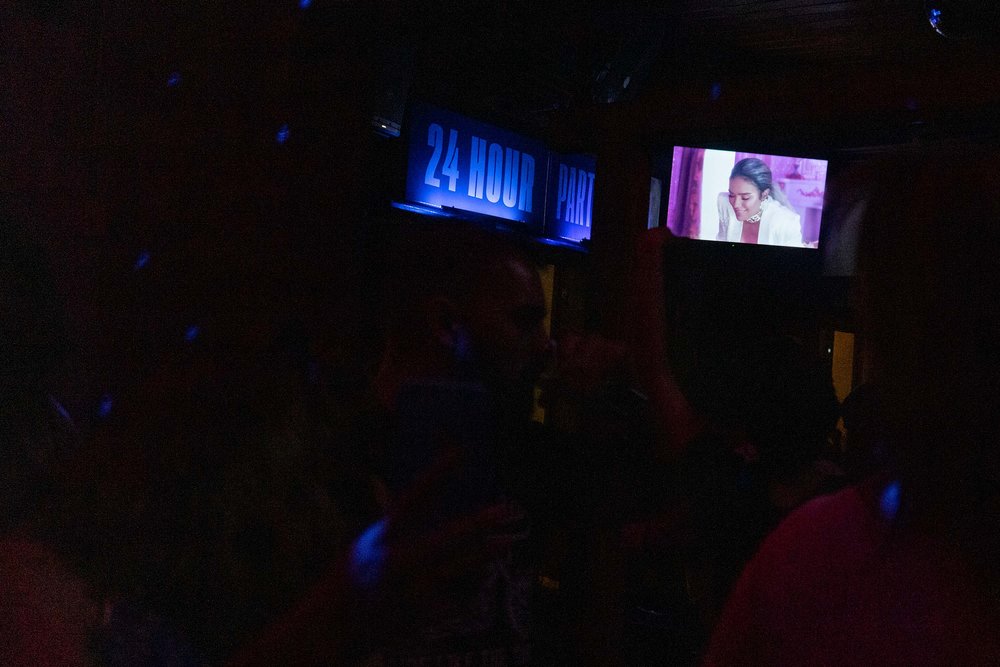
I can’t help but think that central Asunción in 2021 may not live up to the hopes of these figures from history. The decrepit downtown grapples with abandonment: Enormous numbers of residents and businesses long ago relocated to new neighborhoods complete with shopping malls. Whole apartment blocks stand empty and decaying in the thick humidity; second-floor windows of once-grand houses show fascinating displays of wild subtropical plants through their glassless windows. Ironically, high rents stop people from moving into many of these spaces. Property speculation and a lack of urban planning are often cited as causes of the situation.
The pandemic has only intensified the issue. “For sale” and “to rent” signs adorn every street and the silence often breeds fear after dark.
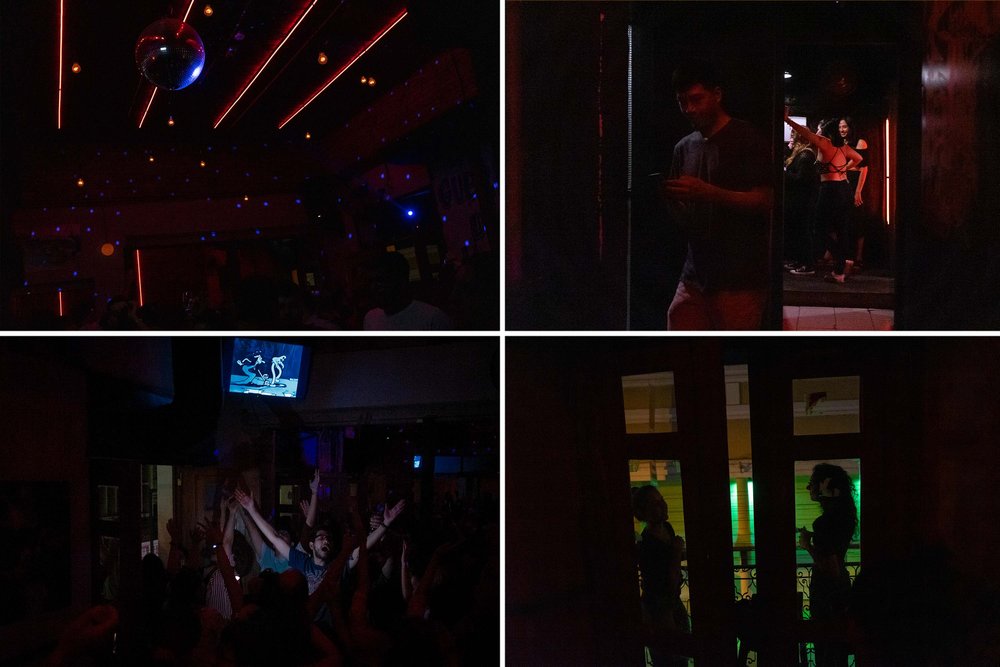
We press on to Arsenal Cué, a nearby bar that will be our final stop of the night. A narrow staircase takes us up to the second story of an old building; many similar spaces in buildings on the surrounding streets stand abandoned. Exposed brick walls, a wooden floor, and long metal balconies indicate the kind of loft look that lies hidden inside Asunción’s historical structures. They can really shine when given the chance.
The wooden floors shake as a young crowd parties into the night, dancing to the sounds of reggaeton and slightly retro English-language pop and rock. I bump into some friends celebrating a birthday and shortly after call time.
A SLICE OF TRADITION
The following day, a Saturday, offers a feeling of renewed life. A squad of drummers sit at their drum kits in Plaza de la Democracia, rocking out to classics, and numerous streets have been temporarily closed to cars to make room for tables from bars and restaurants.
One of the businesses that has taken space on the street is Bolsi, a diner and restaurant that sits near the top of the food and drink section of any Asunción guidebook. The 61-year-old venue is an island of prestige and finery in the city center.

We take a seat at Bolsi’s characteristic bar, a low, U-shaped counter that snakes around most of the bustling space. Customers—some drinking beer or coffee, some with a range of traditional Paraguayan dishes and pastries—share intimate moments under the pleasant lighting. Elegantly dressed older locals, many of whom have been coming daily for decades, sit alongside tourists just passing through.
From the middle of the bar’s U, staff offer a friendly service and chat with each other in Guarani, one of Paraguay’s two official languages and the only tongue of Indigenous origin to be spoken by the majority of a non-Indigenous population in the Americas.
I get talking to Rubén, the manager. He puts Bolsi’s success down to its friendliness and varied menu.
“Surubí fish soup—that’s what a lot of people are after!” he says. Freshwater surubí is drawn from the two mighty rivers—the Paraná and Paraguay—that sit at the heart of landlocked Paraguay’s culture, commerce and landscapes. Stewed into a creamy broth alongside fresh cheese and vegetables, the coveted national delicacy is one of Bolsi’s star dishes.

On tap are Sajonia Brewing Company and Herken, two of the original trailblazers of the craft scene. While Sajonia has expanded into larger premises since becoming part of the Grupo Cartes conglomerate—the giant business group of former Paraguayan President Horacio Cartes—the Stanley brothers continue brewing Herken from their home. Their brewery is named in honor of the original Herken brewery (Paraguay’s first), which was founded by their distant relative, a German immigrant, in the nearby lakeside town of San Bernardino in 1882.
Sat drinking a fine beer in Bolsi, you can’t help but feel you are somewhere near the center of Paraguay.
RESISTANCE
Leaving the welcome air conditioning, we go down the road to a location on the opposite end of the spectrum of Asunción’s cultural scene.
We stroll through a whole block of shuttered garages and shops covered in bright graffiti proclaiming support for LGBTQ+ causes, feminism, and other progressive movements. The street here is also closed off, and dotted with tables packed with groups of friends—skaters and BMXers weave about, and eclectic music fills the air. This is the cuadra cultural, the cultural block, home of La Chispa.

La Chispa—The Spark—is a nonprofit, volunteer-run, DIY cultural center. It forms part of a group of spaces with a similar philosophy, The Network of Cultural Spaces of the Historical Center of Asunción (Es Cu CHA), that looks to strengthen the cultural sector in Paraguay’s capital.
Milena Coral, cultural manager at La Chispa, says the space is giving its all to fight a difficult battle.
“There aren’t many cultural or recreational spaces—it’s a problem here in Asunción. This is a place in which to play music, to simply be. It’s a space for sharing culture, art; things that are super neglected here,” says Coral.
Coral says that the diverse audience attracted by La Chispa has often provoked attacks from media groups attached to the extremely powerful conservative sector, and has seen authorities take sides with those wishing to limit the cultural space’s activities. However, she says they’ve always taken these challenges on board and continued growing.

“There’s a saying among musicians that you have to play La Chispa—you’re not a musician if you don’t play La Chispa. It’s like you can’t have your career without playing here.” This idea may have even spread outside Paraguay; stars like Manu Chao and Café Tacuba’s Rubén Albarrán have visited.
Beer is clearly at the heart of the operation: a social lubricant that also provides funds to keep the rent paid and activities free. The groups of friends sitting at the tables and on the curb are surrounded by half-full and empty ñoños. The fridge has historically been stocked with identical bottles of the overwhelmingly successful Pilsen brand of macro Lager. However, over recent months, a craft beer has landed at La Chispa and several other Es Cu CHA sites: Don Julián.
We try Don Julián’s Gaurania, an IPA named after a characteristic Paraguayan genre of folk music led by harp and guitar. Brown paper wrapping around the bottle sets it apart with a smart finish. The fruity notes provide some needed refreshment as the evening’s concert begins. A lineup of hip-hop performers begin to take to the street’s asphalt-turned-stage.

Estrella, a young MC, is first up—she touches existential themes as a crowd begins to gather. There is a real sense of unity among the kids in attendance, who come from the close-knit hip-hop scenes of the surrounding cities of Ñemby and Capiatá.
“This is rap you won’t hear on the radio!” shouts El Complemento, an established rapper who skips back and forth between Español and Guarani with real depth and humor.
Among the tables and sound equipment, I see Octavio Novara, owner of Don Julián, a brewery at his family’s home in Barrio Obrero, the so-called Workers’ Neighborhood. His journey in brewing has been one of slowly and progressively reinvesting profits to upgrade from 4.5-gallon to 1-BBL equipment. Now, he’s just built an extension to his production room that he hopes will see Don Julián continue to grow.
Novara’s vision of craft beer is led by a strong social drive. In a country where so many people face great poverty and need, he believes it is necessary to think about the role played and represented by a premium product.

“It’s all about having the chance to choose what you think is best for you, and Paraguayans can’t choose what’s best for themselves. An extremely high percentage of the population is poor and can’t make choices about their health, can’t make choices about their education—they can’t make choices about anything,” he says. “We want to lower the price of ingredients so that craft beer can be within the reach of everyone.”
Seeing his beer in La Chispa and other similar cultural spaces, which are frequented by people from diverse sectors of society, may be a first step towards this goal.
This social vision of craft beer is reflected in the brewery’s name. Don Julián was Novara’s grandfather, a lawyer during the 35-year dictatorship of General Alfredo Stroessner (1954-89)—the longest in Latin American history. As Stroessner reigned over Paraguay with an iron fist—terrorizing, raping, and torturing citizens—Julián Novara provided services to those in dire need.
“He represented poor people for free. As he was poor, too. It made life difficult. He had a very difficult life. He was even taken, kidnapped, and tortured,” Novara says. “We created our brand in his honor.”
¡AMIGA, DATE CUENTA!
Other brewers are also pushing hard against barriers in the industry.
Nicole Bibolini is production chief at Palo Santo, one of the biggest names in the sector. She oversees brewing of up to 94 BBLs per month, including Mabelita, a Cream Ale that won Best Ale at the 2019 Latin American Craft Beer Cup.
We sit in the chic industrial interior of the Palo Santo brewpub. Bar staff dust down tables and the first customers of the day make their way in just after work. Forty taps stand behind the bar, their handles—all varying in size—made of the fragrant wood of the native palo santo tree that lends the brewery its name.

While emphasizing that there is an extremely positive and supportive atmosphere in the craft sector, Bibolini says there is still a long way to go regarding women’s involvement.
“Women’s participation is really low compared to other countries,” she says. “There still aren’t many of us.”
‘Let’s do a beer made by women,’ we said. The market was missing that type of presence.
She has co-founded two initiatives to challenge this dynamic. First is Las Kuña—“The Women” in Guarani—a group for women interested in craft beer, whether brewing, tasting, judging or otherwise. Members run activities and work to position craft beer as part of feminist events such as International Women’s Day.
“The idea is to encourage women to join in,” she says. “It’s tough to get into the craft world really. I mean, they’re all boys and you clearly might be worried about getting involved. Las Kuña is a safe channel into those spaces.”
Biblioni also helped create the nomadic brewery Date Cuenta, or “Wake Up” in rough translation. “‘Let’s do a beer made by women,’ we said. The market was missing that type of presence.”
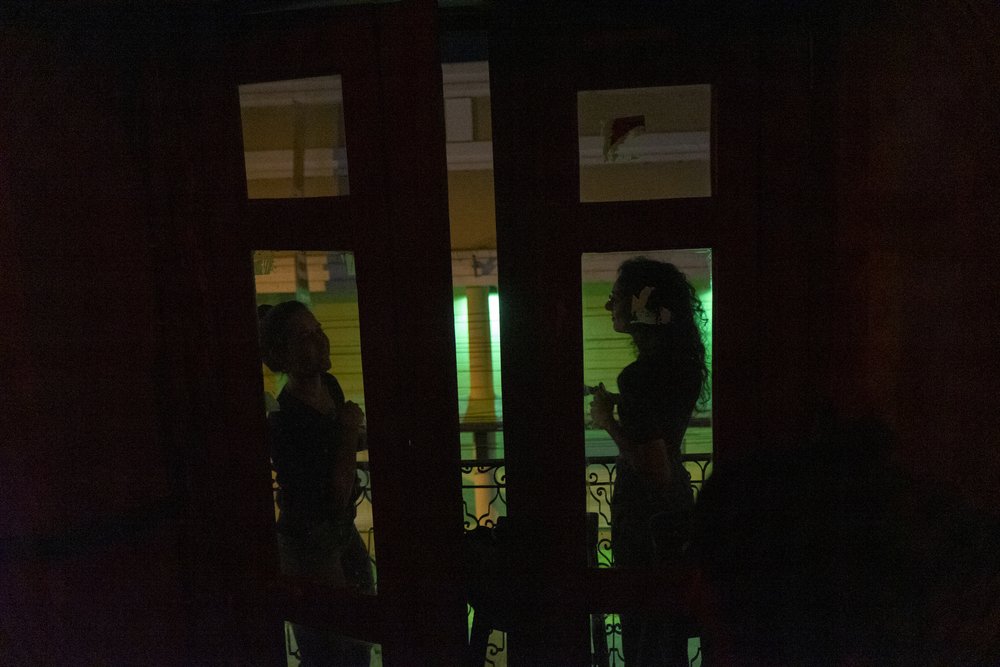
Now, their beers are stocked at numerous liquor stores and a feminist cultural center where Biblioni reports it sells better than the stalwart macro Lagers. “That really made us laugh!”
Date Cuenta also runs educational activities for all. It organizes a regular brewing school that includes classes on a broad selection of techniques and also offers food pairing events to the public. Biblioni says these initiatives help overcome the difficulty in accessing resources and information in Paraguay that keeps many from brewing—or from simply finding deeper enjoyment in craft beer, especially those without the option of traveling abroad to do courses.
“Here in Paraguay, the biggest difficulty I saw—and still see—is that there’s nowhere to learn,” she says. “I said, ‘There’s got to be a way to teach this. Let’s start by doing a beer school at least.’ My real dream is to have an institute: the first institute in Paraguay.”
FINAL JUDGMENT
AcervaPy’s sixth-annual contest has arrived, marking the end of my beer journey. It’s taking place at Simón Dice, so I head back to the grand old house full of murals and am immediately welcomed by Montanaro and an IPA. He tells me that there’s a record number of entries: more than 260 samples from an enthusiastic mixture of home and craft brewers, a huge increase on previous years.
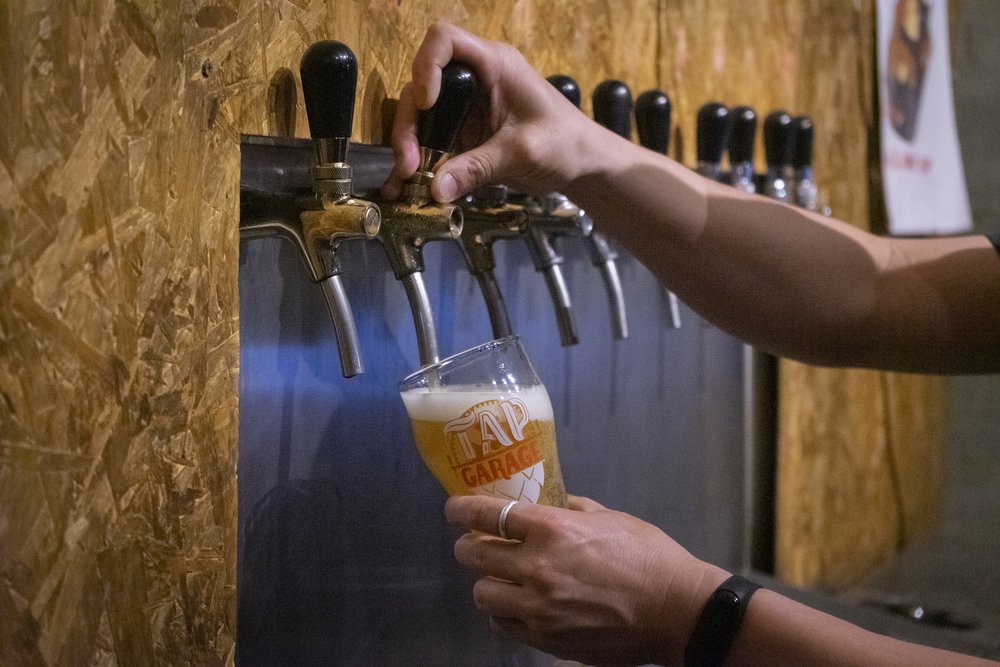
After a hard day’s work judging entries, there’s a tasting class for a small audience of AcervaPy members led by the brewer Fernanda Lazzari, joint owner of the Morada Cia Etílica brewery in Curitiba, Brazil. I’m curious to hear an outside take on Paraguayan beer.
“The quality of the beers in the competition was amazing,” she says. “I’m amazed by how much has improved in its craft beer scene. Since it’s a small scene, they’re very united and work together, sharing information instead of hiding it, and that helps so much. They share information, they’re friends, they work together, and I think that helps the evolution happen faster.”

Luis Sánchez of Palo Santo begins the next presentation, a talk on barrel-aging, as if trying to prove Lazzari’s point.
“We’re going to share this knowledge so that you don’t commit the same mistakes that we did,” he says. The group of merry brewers sitting around the tables in the patio chuckle. Lazzari nods knowingly.
“The sky is not the limit: Paraguay is going far,” she says. “People want to make great things and they’re going to make them.”

